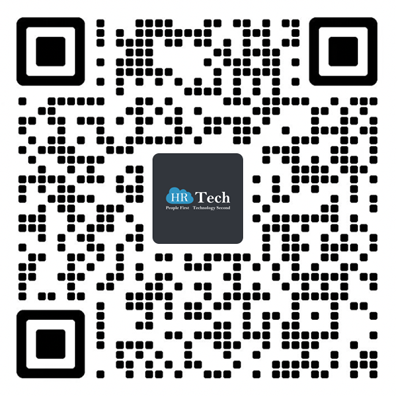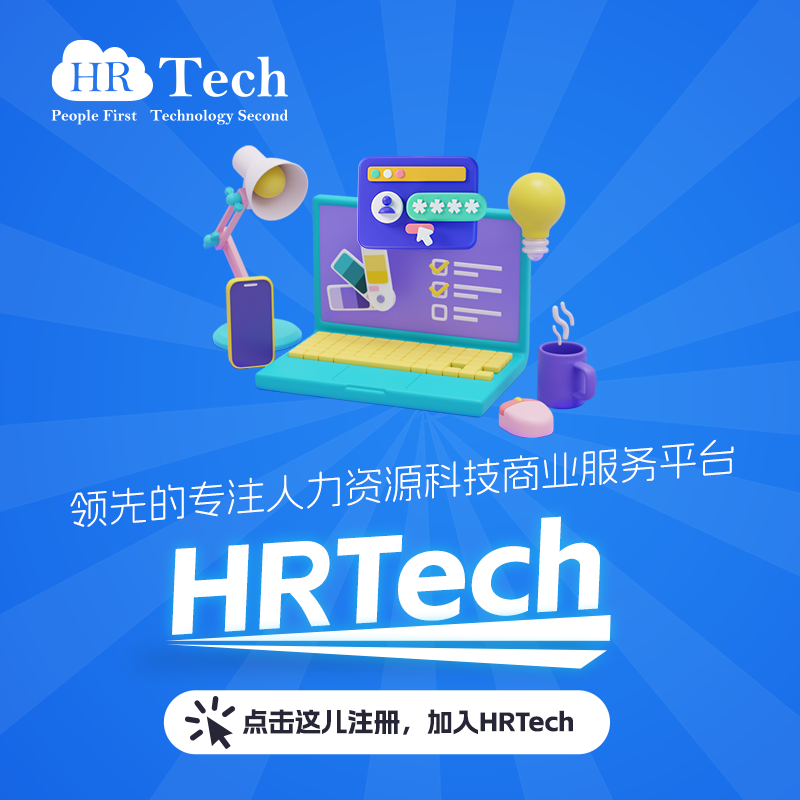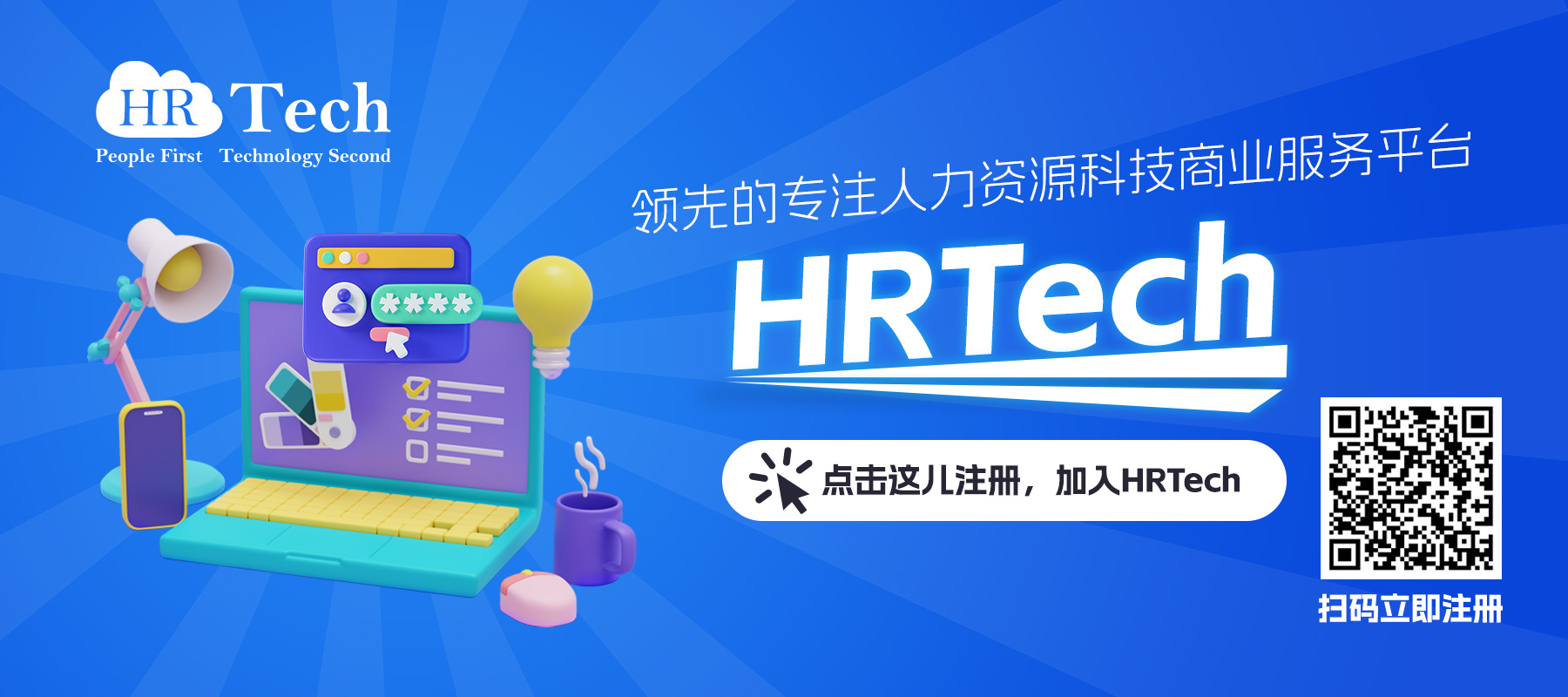-
 观点
观点
帮你减轻微信办公的痛苦,正在成为创业公司的机会
当微信打破了工作与生活之间的那道墙,从此工作进入#7X24小时#模式,每个员工被推送不停的微信群绑架,而且每个公司、部门,每个项目、每次活动、每伙小团体都有一个微信群,微信群成了活动通知、上班打卡、员工交流、工作安排、商务拓展……的地方。
管理微信群,在不同群之间无缝切换,在工作模式和生活模式之间无缝切换也成了每个职场人的必备技能。虽然从微信刚刚入侵开始,就一直有人抱怨“工作生活界限的消失”不堪其扰,然而天长日久,这样的“变态”已经变成了常态。每个人早已都泥足深陷无法自拔。
当然,致力于将职场人“解救”出来的专业团队协作、沟通工具一直层出不穷。而企业级IM市场也被视为阿里在社交领域的一次机会,企业微信也紧锣密鼓地推进。然而,这些封闭办公系统不仅未能减轻职场人的心智负担,反而“撕裂”了他们的工作沟通。让他们奔忙于微信群与钉钉(或企业微信)之间。如果说钉钉与微信的互相封闭可以理解,那么企业微信与微信之间的壁垒高树就有点难以理解了。
刚建立企业微信被领导骂了,老板说这是什么玩意儿,完全闭门造车,和外界无法联通,还不如微信群聊,赶紧滚回去建个微信群聊。
企业微信竟然还要单独下载安装,微信放弃了固有的自身优势,本来可以在现有微信中集成的功能,非要搞成单独的APP,那不如用钉钉了。
这两条来自于用户的亲身吐槽“戳中”了企业微信的最大软肋。
虽然在企业微信产品产品介绍中,将“转发微信聊天记录”排在第一位,以示与钉钉的差异化之所在。然而,用户需要的远远不止于聊天记录转发微信,而是与微信的深度融合、打通,基于微信群的功能拓展。不过,微信肯定不会主动戳破工作与生活之间这层窗户纸。
以前都说因为微信和QQ是两个事业群,微信主打移动社交,QQ主打办公桌,日程表是办公功能,但是现在无论是社交或是办公约事都是在微信上约,为什么微信不能直接侦测并建立提醒功能?我每次约吃饭还得跳转到日历上建立新约会和提醒真是一个累人的事,希望微信团队能给个解答。
知乎上的这个问题反应出公司人对于微信的“求全责备”之心。也正是因为独立企业协作工具与微信之间的这种“撕裂”,才给了很多创业者以开发提升微信内工作效率的工具的创业空间——比如日程管理类应用。
如果说上一代的日程管理是“日历+邮箱”模式,那么这一代的创业者瞄准的是“日历+IM”模式。
Google Calender和Microsoft Outlook是“日历+邮箱”模式的代表,由于中国并没有欧美国家的邮箱文化,这种模式始终未能深度渗透。
这一代起步于微信的日程工具,则希望利用微信社交网络与自然交互,结合语音识别、自然语言处理、算法推荐等技术,帮助用户随时将信息流中的事项“结构化”为日程,并可通过微信快速实现多人分享,实时提醒。这种打入微信内部提供效率工具的思路与企业级SAAS服务自成一体的模式完全不同。
当然,这些日程、协作工作的野心都不只在于做一款微信内效率工具,而都想通过微信积累用户,然后将社交关系链转移到自己的App。而起家时身兼GTD工具与日程共享的日历工具,后来则走上了不同的岔路口。一些继续主打日程共享与团队协作,并努力将微信上的社交关系转移到App上,另一些则转向了个人GTD工具。
微约日历是前者的代表,为了确保转移到App上的用户关系黏性,微约日历就主打多人共享时间表的概念:在添加好友,设置日程查看权限后,伙伴间可以互相查看对方日程详情或忙闲时段,实现实时快捷的时间协调,方便组织会议、活动、聚会、户外等事项。
日程的共享带来的是工作透明度的提升,办公协作效率的改善,以及团队整体同步性的增强。对于扁平化的创意团队,以及跨部门乃至跨公司的协作团体,都是一款打破层级藩篱的协作利器。
而朝夕日历则是从“社交日历”转向了“智能时间助理”,其开发的朝夕万年历、番茄闹钟等GTD工具以及“GTD微课“为它积累了百万级粉丝,也让它意识到基于微信的GTD工具是一条快速增长的捷径。
发展路径的分化也意味着基于微信的日历工具所面临的瓶颈。
“日程+提醒”模式本身就是在工作、生活截然分开的时代,一种必要的工作安排。微信群这种实时沟通、无缝渗入生活的模式已经一定程度上颠覆了这种模式。微信活动群组在活动组织、通知、变更、参与情况跟进、实时协调反馈等方面的灵活度、方便性明显要高于这些“时间定死”的日程应用。(朝夕日历在添加日历之后添加了讨论页面,这明显是再向微信群组的一次“倒退”)。而这些日程工具至多只能以“群插件”(小程序)的方式做“增强”的工具,其自身独立性及延伸价值存疑。
当然,这也是所有工具类小程序共同面临的问题,转移社交链到自身平台还是专注于爆款工具,究竟哪一种策略能够走得更远,将是小程序创业时代一个绕不过去的拷问。
(本文首发钛媒体,记者/张远)
-
 观点
观点
2018 年 SaaS 行业的 6 大趋势
2018很快就要到了。在即将到来的新的一年里,SaaS行业会出现哪些新趋势呢?
(一)市场营销将会变得更加人性化
B2B领域的市场营销已经从一种“遍地开花”的方式转向了一种更个性化的方式,开始像对待人一样对待销售线索。这一趋势不仅仅是基于账户的营销。2018年,B2B领域的市场营销将会更加专注于通过讲故事和教育用户的方式来建立与客户间的信任,从而最终获得订单。
这种新的思维方式将会影响SaaS公司的方方面面,从品牌传播到公司所依赖的营销渠道等等。完全封闭的营销内容和销售线索联系方式已经一去不复返了。客户们不希望仅仅为了在某个非特定日期被动地得到商家的回应而“泄露”自己的个人信息。客户们希望能够主动参与进来并进行学习。因此,聊天和消息应用开始成为客户旅程中越来越重要的一部分也就不足为奇了。
为了进一步与潜在客户和现有客户进行沟通接触,我们将看到更多的公司采用Drift、InsightSquared、Zuora、Intercom和Slack等产品来为客户提供播客服务。这个新渠道不仅有助于提升企业的品牌建设的能力,还能让企业在有机会与自己的社区用户进行官方互动的基础上,为用户提供最佳的建议和案例。展望未来,那些认识到B2B产品买家偏好变化的公司在新的一年里将会成为能够获得最大差异化竞争优势、最高的客户保留率和客户成功的公司。
(二)“反精益”产品将开始崛起
在精益创业公司和最小可行产品的方向上,钟摆已经摆得太远了。在2018年,随着反精益产品的崛起,我们会发现钟摆的方向将会得到校正。
如果说SaaS市场已经饱和,那其实算是一种轻描淡写的说法。仅仅是营销科技领域的SaaS公司,目前全球就有超过5000家,而在2011年,营销科技领域的SaaS公司只有150家。其实不单单是营销科技领域,其它领域也存在这个饱和的现象。在过去几年中,在廉价的基础设施(AWS)、全球人才池和大量的风险投资基金等因素的共同推动下,销售技术、安全、人力资源技术和很多其他垂直领域市场都已经出现了饱和。
你已经无法再依靠一款针对SMB市场的精益化产品从众多竞争对手中脱颖而出了。相反,你需要在市场上找到一些更大、更痛的痛点,并针对这个市场痛点开发一个强有力的全面解决方案,而且让确保解决方案有一个清晰而有说服力的价值主张。人工智能让这一转变变得更加紧迫:在人工智能驱动真正的商业价值之前,需要做大量的前期工作,这些工作是MVP(最小可行化产品)几乎不可能完成的。
如果你有勇气,同时明确的价值主张,那么就考虑打造一个“登月”的大项目,而不是一款简单的最小可行化产品。
(三)向更有针对性地销售辅导和培训的转变
销售辅导和培训是驱动销售代表业绩增长的最有力的方式。随着对降低CAC(客户获取成本)的持续重视,以及向内部销售模式的转变,这种情况在2018年将会变得更加明显。根据2017年SaaS AE指标报告,69%的公司都在招聘只有3年或更少销售经验的销售代表。在这种环境下,销售人员快速入职流程、持续的培训、不断地实时辅导是销售团队获得成功的必要条件。然而,能够帮我们更好地辅导销售的解决方案是非常少的。
在过去的几年里,自动化在销售技术领域一直非常流行,从调研和销售线索获取工具到邮件管理等。2018年,我们会发现这将会向销售经理和销售赋能方向转变。像Chorus.ai、Gong.io 和VoiceOps这类解决方案只是一个开始,我们已经知道如何向经理们提供更有力的建议反馈,并把销售培训内容集中在可以改进的关键领域,从而提升销售人员的业绩表现,最终推动营收的增长。
(四)越来越多的公司开始关注产品定价
2018年将是企业开始更加关注定价的一年。毕竟,定价是企业赚钱的根本,也是一个SaaS公司最高效的利润杠杆。然而,53%的SaaS公司里是没有专门的人来专门负责产品定价的。更糟糕的是情况是,只有14%的公司会先考虑定价,然后再决定是否要开发一款新产品。这导致很多公司无法实现营收目标,浪费了宝贵的产品和工程师资源。但是在2018年,这个现象注定要改变。投资者和高管们将会意识到,由于他们未能专注于定价而损失了多少钱,并最终采取措施解决这一问题。
(五)这是对求职者越来越有利的市场
考虑到大量科技公司的招聘需求量都在稳步提高,对合格的候选人的需求量比以往任何时候都要高。
这意味着什么呢?首先,应聘者在要求当前和未来的雇主为自己提供更好的福利待遇时拥有更多的话语权。随着千禧一代员工的不断成熟,他们所希望得到的福利待遇也在不断发生着变化。之前,那些刚从初级员工成长为中等水平的员工所希望获得的福利包括无限量供应的啤酒、乒乓球室、办公室快乐时光等等。如今,人们更希望获得的福利待遇如育婴假、工作与生活的平衡、培训和个人发展等等。
此外,根据最新法律的要求,在薪酬以及相关方面,今后对求职者也将越来越有利。从2018年8月起,马萨诸塞州将实施“工资平等法案”,该法案禁止雇主在发放Offer之前向求职者提出薪资相关的问题。该法案赋予员工更多薪酬方面的砝码,但也意味着将会缩小男性和女性在类似岗位上的薪酬差距。其他州可能很快就会效仿马萨诸塞州的做法,准备好迎接2018年的招聘和薪酬变革吧。
(六)多元化比以往任何时候都更为重要
与以往任何时候相比,如今公司的CEO和创始团队成员似乎都在真诚地邀请更多女性高管加入公司董事会。很多媒体和研究报告发布的文章和报告让科技公司领导岗位缺乏女性成员这个事实变得众人皆知。明年,人们对多元化团队的建设将会越来越重视。
Athena Alliance是一个专门致力于帮助有资格的女性获得董事会席位的组织,它正在努力让多元化团队变成现实。在2018年,那些董事会中100%都是男性董事的董事会将会被进一步施压,促使他们自上而下进行团队的多元化建设。
在此期间,科技行业在多元化问题上做的努力主要集中在性别问题上,在2018年,多元化的努力范围将会进一步扩大,从而解决团队中种族和民族的多样化问题。举例来说,只有不到5%的技术人员是黑人。对科技行业中少数群体的支持应该会在未来的一年里得到进一步加强。
除了有Athena Alliance这样的组织的帮助,人工智能将会被用于减少招聘过程中存在的偏见。为什么这么说呢?人工智能将会消除在求职申请和面试过程中存在的情感偏见和固有偏见,能够在不看求职者背景的情况下,录取那些展示出相关工作能力的合格求职者。比如Avrio,这是一个通过人工智能筛选、评价和面试求职者的人才平台,还比如Textio,这是一个增强写作平台,鼓励创作无偏见的职位描述。2018年,HR技术领域的人工智能在打造更多元化的人才池以及科技生态系统中更加多元化的员工构成方面将发挥重要作用。
原文链接:https://labs.openviewpartners.com/2018-saas-predictions/#.WjInvROCzeR
编译组出品。编辑:郝鹏程。
本文翻译自 labs.openviewpartners.com,原文链接。如若转载请注明出处。
-
 观点
观点
移动办公市场走进深水区,想活下来该怎么游?
作者:人称T客
来源:T客汇
前不久有人写道:“霸道的阿里钉钉用免费骗到你老板,用钱砸死同行,寡头背后骂声一片”,虽然这里面的有些观点我不能完全认同,但不能否认在移动办公市场的浅水区只剩下血洗和屠杀,面对巨头们的铁蹄中小SaaS玩家又该何处求生呢?
通用型产品已无容身之地
笔者的一位好友就曾无奈的表示:“2018年将是他们最艰难的一年,因为三年的应收账期已到,将会面临大批客户不续约逃离的现象,而罪魁祸首竟然是阿里钉钉,就算你的功能比他们做的再强大,产品做的再好,用户体验俱佳,你也拼不过他的免费策略,即便是CRM、IM和外勤管理这样的厂商也无法摆脱和阿里钉钉的正面竞争。
IMO班聊曾经是国内最专业、成熟的企业沟通协同工具,巅峰时期号称用户超过百万,被誉为继阿里钉钉、企业微信之后的企业IM第三股势力,为工作而生这一有别与钉钉和企业微信的应用场景,在经过几翻较量之后却在2016年底不得不另寻他路。
今目标也是阿里钉钉狭路相逢的直接对手,中国最早的免费企业办公平台,有超过300万家企业用户的公司使用,在面对巨头们的侵入后,也没能将“免费进行到底”开始另寻出路,从软硬一体化到智能考勤机的试验,由于跟阿里钉钉的发展路径太像,在今年宣布收费之后效果表现不佳,也开始大面积裁员收缩战略。
另外,压倒这些厂商的最后一根稻草跟整个的资本环境不无关系,前两年资本疯狂的时候,只要你有一款产品并且有一个好的故事就能够获得资本的青睐,而现在用户需要什么样的产品决定你未来能走多远,一些产品门槛过低,并且只服务小微型客户的产品,将有可能被钉钉和企业微信碾压,特别是在资本遇冷收窄的情况下,如果没有一个好的商业模式和现金流,2018年面向小微型用户的移动办公市场有可能成为洗牌的首选领地。
什么样的产品才能够存活?未来出路在哪儿?
在阿里钉钉和企业微信的众多竞争对手中,金蝶的云之家也是其中一员,前两年两家一直争端不断,从一种工作方式对决一种新的工作方式的口号,两家就在市场上数次交手,无论是企业用户数还是在苹果的App Strore下载量,两家一直相互较力,都想角逐未来企业移动办公领域的王座,有媒体甚至宣称这是SaaS市场上的新3Q大战。
不过今年最明显的感觉两家的已不再一个平面竞争一个向左一个向右,阿里钉钉则专注软硬一体化的小微企业办公解决方案,而云之家正从一种新的工作方式变成了一种新的连接方式,传承了金蝶二十余年的专业经验和资源优势,主打“赋能个体,激活组织”产品价值,从连接人和端,到解决企业内外部系统的互联互通。
这符合当前企业上云的迫切需求,信息孤岛、难集成一直困挠着企业CIO们多年,并没有因为SaaS到来而改变。相反存在于本地部署多年的信息孤岛伴随着公司的业务一并升入了云端。
据Forrester最新的调研显示:52%的软件决策者认为SaaS技术集成是一个挑战。这种担忧不仅包括SaaS与SaaS集成,还包括SaaS与传统内部应用程序的集成。
华润双鹤药业负责信息化业务的杨锐就曾表示:我们需要一个平台,把分散在互联网上的大量的SaaS应用进行整合,来帮助我们打通软件之间的数据孤岛和业务孤岛。
海信在今年构建移动办公门户的时候,更是把打破各系统间信息孤岛被列为选型的必选项,可见企业不是不需要SaaS,而是需要能够符合自身需求的产品。
特别随着企业对于SaaS了解的深入,整体解决方案渐渐成企业迁移云端路径的首要因素。国内很多SaaS厂商被逐出局主要是由于产品过于单一,通常只能适用于某一单一应用场景领域,而企业需要的是一体化的解决方案,对于个性化的需求日益旺盛,这也对SaaS产品的健壮性提出了更高的要求。而一些单一场景化的厂商有可能受到产品的制肘而出局。
云之家为什么成为了这场屠杀中的例外,这源于他对于企业用户市场的了解,在提供移动办公SaaS应用的同时,还通过开放平台可连接企业现有业务(ERP),接入众多第三方企业级服务。利用移动、社交、大数据技术,帮助企业实现连接人,链接端,联通内外的战略思路。
总之,移动办公SaaS要想在巨头们的夹缝中求生,必须另辟蹊径,从客户的需求角度出发,而不是阿里钉钉和企业微信拼小微市场拼产品拼功能。
-
 观点
观点
硅谷独角兽首席营销师告诉你:为什么创业公司需要增长团队?
编者按:本文是Greylock增长顾问,Pinterest前增长主管和Grubhub首席营销师Casey Winters有关增长团队的PPT演讲,现整理如下:
一直以来,我收到很多有关增长团队的问题。显然,大家对增长团队拥有诸多疑问。这个营销是重新打造品牌吗?这个团队向谁汇报?它的目标是什么?他们究竟做什么?我什么时候为自己的企业建立一个增长团队?
增长的目的是扩大具有产品市场适应性产品的使用范围。你可以通过构建一个剧本来扩大产品的使用。剧本也可以被称为增长模型或循环。
在询问增长之前,你应该问的第一个问题是,是否具有产品市场适应性?
对上述问题的传统定义是定性的,如果你和我一样,那你会喜欢使用数据来回答这一问题。对大多数企业来说,获得数据的最佳方法是测量保留率。
确定关键操作的最佳方法是找到一个度量标准,意味着用户必须从你的产品中获得价值。了解衡量指标频率的最佳方法是,在你的产品出现之前人们解决这一问题的频率。让我们来看看一些例子。
对于Pinterest而言,如果我们向Pinner展示了一些与他们兴趣相关的炫酷事物,那么他们就获得了价值。判断Pinner是否认可这些事物的最佳方法是看看他们是否选择了保存。
对Grubhub来说,这更容易确定。人们只有订购食物才能获得价值,而当我们进行调查时,发现人们一般会每月订购1-2次(纽约除外)。
一旦你有了关键指标和制定频率,你就可以绘制出保留曲线或队列曲线。如果曲线变平,那意味着一些人在产品中发现了持续价值。但这还不够。
Brian Balfour对此写了一篇很重要的文章,在文章中,他将这一问题称之为产品渠道适应性。
如果你一直在关注创业新闻,那你估计会记得来自Paul Graham的这篇推文。它谈到了Y Combinator曾资助过的增长最快的创企。这是在短短12个月内月收入增长率从0增长至35万美元的曲线图。
这是一家从事按需清洁服务的创企Homejoy。投资者喜欢这个图表,所以他们向该公司投资了3800万美元用于扩张。
20个月后,Homejoy倒闭了。
如果你是依靠折扣获得产品市场适应性的,那你是没有真正获得产品市场适应性的。产品市场适应性不是收入增长,不是用户增长,也不是成为应用商城里的第一名。产品市场适应性是保持持续增长的保留。
所以我认为,产品团队负责创造人们喜欢的产品,而营销团队负责让人们尝试产品。那是什么改变了?
改变的是对真正推动创企增长的认识。主要有三个杠杆。第一阶段既是最重要的也是最不了解的。在第一阶段,你通过改变产品来提高增长率。这些改变包括完善入职培训,通过诸如病毒式传播或SEO等活动帮助产品获得更多用户,提高转化率等等。
这些改变是“免费”的,因为他们并不需要广告预算。所谓的成本也只是产品团队时间的机会成本。它们是可衡量的,因为你可以创建一个实验,并了解改变的确切影响。它们也是可扩展的,因为如果你做了一个改变,比如说提高了你的转化率,那么它会产生一定的影响效果,很可能这一影响效果会持续到明天,几周,甚至几年。
另外两个阶段就是我们传统上所认为的营销。绩效营销措施,比如在Facebook或谷歌上购买广告,也是可衡量和可扩展的,但是却具有广告预算。品牌营销通常需要更大的广告预算,而且难以衡量或扩展。品牌营销作用的时间框架需要数年,也难以确定。如果你所进行的公关活动或电视广告看起来很快就起作用了,那就表明它是难以扩展的。这是因为品牌营销总是需要新的故事来吸引人们的注意力。
这就是为什么营销不能负责所有的增长措施。他们没有权力,也没有能力。他们可能知道需要提高网站的转化率或从下线获得更多的流量,但是他们无法获得产品的路线图,来适当的调整自己的优先级。如果他们得到了工程和设计上的帮助,那就意味着他们没有合作打造最佳解决方案的专业知识。
也许更重要的是要了解营销与增长之间的差异,即传统营销渠道是如何随创企改变的。以上是传统营销。这种模式是基于老式的产品开发模式,而不是像如今互联网企业的砸重金模式。
创企应该生产人们已经想要的产品。当你创业时,你可以颠倒渠道,把重心放在人们已经想要的产品或已经使用产品的用户身上。这是以小型预算(甚至没有)获得更多的效率。
当你将其转化为战术时,你会看到产品驱动的增长举措是如何主导优先事项的。这并不意味着你不会从事绩效营销或品牌营销工作,但是它们通常会在产品生命周期的后期变得重要,因为它们对一个已经持续增长的公司来说是一种催化剂。
所以我花了很多时间解释为什么增长与市场营销不同。那与产品有什么不同呢?
增长团队不会创造价值。他们确保人们体验到已经创造的价值。
一个增长团队需要解决的常见例子有:
改善注销体验(转换或搜索引擎优化)
发送更好的电子邮件或通知
增加推介或病毒式传播
完善新手培训
搜索引擎优化(SEO)和新手培训是比较困难的,因为它们的迭代周期要比其他几项更长。
增长团队创立之初,并不是找到一个增长副总来介入和解决所有问题。它们通常是由真正了解公司情况和现状的现有员工或创始人组成。他们向专职人员汇报工作情况,并聚集在一起专注于解决问题。
在创立团队之后,要找出应该专注的领域,你需要分析数据。例如,在Pinterest,他们原本希望我和我的团队专注于SEO。而我们所看到的是,虽然有很多机会可以通过SEO获得更多的流量,但是更大的问题是这些流量的转化率。所以我们决定专注于转化。
然后我们必须弄清楚要做什么。我们团队中的一个工程师Jean,最近做了一个实验,来帮助我们获得清晰的见解。所以,我们说,当人们点击Pins时,我们可以使用同样的模式。点击一个Pin可以表示出你对Pinterest拥有足够的兴趣。
当人们喜欢看到的东西时,另一个会做的动作是滑动页面。所以,我们决定试着像阻止谷歌抓取器一样,阻止他们滑动页面,并让他们进行注册。
Jean花费了两天的时间来开展这个实验,结果得到了比预期更大的影响。
所以这就是一个你在数据中寻找转化问题的例子。增长团队还能做些什么?以下是我在Pinterest工作时的例子,和一些我们学会的最佳举措。
通常,增长团队所关注的最大领域是保留。是的,增长团队不仅仅是为了收购。保留来自于对提高核心产品的专注。增长则来自于减少体验核心产品的摩擦。简化当前产品的工作方式通常比添加新功能更具影响力。新功能会使产品复杂化,也会让新用户难以理解。
那么如何简化核心产品呢?你必须要有数据来了解人们做什么,并通过定性研究来了解其中的原因。我们花费了很长时间,来让非Pinterest用户在笔记本上注册网站,找出他们不激活帐号的原因。
在Grubhub,数据指出它在转化和保留时呈现出S曲线。此图是波士顿地区的转化率,主要基于你在搜索地址时Grubhub会显示出多少餐厅。在进行55次操作后,针对新用户和回头用户的转化率增加了一倍。
定性研究可以给我们提供不同的见解。当我们询问用户为什么不多次使用Grubhub时,他们会说“太贵了”。我们觉得很奇怪,因为Grubhub是免费使用的。而他们的意思是,由于存在最低限制和递送费用,整个快递服务太贵了。于是,我们说服一些餐厅降低他们的最低限制和费用,来看看增加的订单量是否能够弥补较低的利润。一旦有成功案例,我们就可以来说服其他餐厅。
在Pinterest,我们简化了注册和新手培训流程。以前需要5个步骤的流程,现在只需要三个步骤,其中一个是预先填充,另外两个是可选项。我们所做的就是引入摩擦,让Pinner更有可能找到他们关心的内容。这是在向他们展示内容前询问哪些话题是他们所感兴趣的。
我们也意识到,人们看到的内容越多,他们就越有可能找到自己喜欢的东西,这也会提高保留率。所以,我们删除了不重要的Pins内容。所有这些都提高了激活率。
我们还根据情况对新用户进行培训,告诉他们下一步做什么。有一个常见的说法,如果你需要在设计中添加教程,那一定是糟糕的设计。听上去很明智,但它却是很危险的。而我认为,有教程的设计总比没有教程的设计好。
搜索引擎优化对于一个公司的有机增长是起到真正的杠杆作用的。当然,不是对每一家企业都有用。人们需要已经在寻找你所做的事情。这还远远不够。你需要成为这一话题的权威人士,比如谷歌主导了连接到你的域名和内容的相关外部链接。你还需要与刚刚搜索的内容有关。
我们对Grubhub也进行了这些方面的改善。当Grubhub推出新的市场时,我们很显然与当地没有关系。所以我们会去联系当地的博客和新闻媒体,告诉他们我们正在开发这一市场,我们想要给他们的读者提供第一单减免10美元的优惠。他们所要做的就是链接到折扣会自动覆盖的页面。一段时间之后,该页面将具有足够的本地链接。所以即使优惠折扣已经结束,但它仍然会在当地的快递搜索上排名第一。
对于相关性,Grubhub知道哪些餐馆可以将外卖送到哪里,知道他们的菜单数据和真实客户的评价。所以,我们将这些数据集中到当地外卖的登录页面上。
我们在Pinterest也采用了相同的登录页战略。虽然Pinners已经在他们最喜欢的主题上创建了讨论组,但是那仅仅只是一个人的观点而已。Pinterest已经在全球范围内为每个主题回传数据,所以我们知道整个Pinterest社区中最好的Pins是什么。所以,我们创建了最佳Pins的主题页面,而且它们的表现要优于搜索引擎上的个人讨论组。
我们也在Pinterest增长团队的电子邮件和通知上做了很多工作。电子邮件是保留的关键驱动力。它们不会解决你的保留问题,但是如果你走对了方向,它们可以起到帮助作用。在我经历过的每家公司,人们都很讨厌电子邮件,并不想发送邮件给他们的客户。而当他们终于这样做时,他们看到了保留率的提高。你不是你的客户。你得到的电子邮件比他们多。如果电子邮件与他们使用产品的原因的核心价值有联系,那会起到帮助作用。如果他们推送的是营销信息,那电子邮件是没有帮助的。
在Pinterest,我犯了这个错误。我用电子邮件开展了一个广告活动,解释Pinterest可以做到的所有事情。人们不关心Pinterest可以做什么。他们关心的是是否能看到与自身兴趣有关的炫酷内容。我们需要停止像营销人员那样发送电子邮件,而是像一个个人助手一样。所以我们针对每个Pinner发送了和兴趣相关主题的流行内容,接着,我们就看到了保留率的提高。
然后,我们围绕它建立了一个系统。每个Pinner在不同的时间,喜欢不同的内容,对量的需求也不同。所以我们通过电子邮件,了解了每个Pinner喜欢的内容,喜欢何时收到电子邮件和通知,以及收到电子邮件的数量。
如果你正在测试电子邮件和通知,你可以先手动测试,然后进行自动化和个性化。我在Pinterest和Grubhub所学到的是看看什么值得测试。在Pinterest,一名工程师测试了4500个不同的主题,产生了数十万的额外周活跃用户。大约在同一时间,我们花了三个月的时间重新设计了所有电子邮件,它没有对使用产生影响。
我在增长和营销团队看到的一个常见问题是,他们认为电子邮件和通知只会产生积极影响。这不是真的。它们也会导致取消订阅和应用删除。
增长团队有一个明确的目标,只有你首次找到产品市场适应性,这一目标才有意义。一旦你有了目标,你会发现传统产品和营销缺乏帮助你扩大产品使用范围的能力。这就是增长团队需要介入的地方。增长团队使用数据和定性研究来帮助理解阻止更多的人在产品中发现价值的摩擦。这可能意味着收购,但也可能意味着减少核心产品的摩擦,专注于转化或入职,或者找到提醒现有用户的方法。
【猎云网(微信号:ilieyun)】12月11日报道(编译:福尔摩望)
-
 观点
观点
【观点】移动办公不是OA强化,赋能个体、激活组织才是根本任务
摘要: 一厢情愿把传统管理思维加在产品上而不考虑当今时代企业管理的真实需求,是移动办公产品最容易掉入的自作多情陷阱。
移动办公突然又热闹起来。苏宁的豆芽、平安科技的快乐平安、京东的咚咚工作台在内部运用成熟后,纷纷开放API准备做IM。做团购的美团也来插一脚,其IM工具“大象”11月9日已经开放注册,从功能描述看,要硬刚钉钉。
别人在入场,场内经常被刚的钉钉却转头做起了硬件,11月19日一次性推出智能前台M2、智能通讯中心C1、智能投屏FOCUS三款产品,其收割流量做生态之心昭然若揭。另一个场内老玩家,企业服务大佬级企业金蝶旗下的云之家,也在线上、线下大张旗鼓地搞起了“活力星青年”活动,把惯用在C端的主题营销带到了企业级服务的推广之中。
新老交汇,天差地别的玩法和理念,风口过后再度泛起涟漪的移动办公的乱象已经滋生,在入场的方式上,似乎什么背景、什么领域的企业都可以堂而皇之地来分食移动办公这杯羹,不需要有任何门槛。在具体的玩法上,做生态、搞营销的方式也是花样百出。
那么,作为企业级服务的移动办公究竟应当以什么姿态切入企业管理?玩家们火急火燎的背后是否真的看清楚移动办公的真相了,还是只是在企业级服务市场的大蛋糕下的一厢情愿?
群雄逐鹿,却是“花式出水”
光说不练假把式,对移动办公产品究竟要怎么走,不如看看行业内主要玩家已有的实践做法。这里选取在各类统计中量级能够“看得上眼”的阿里钉钉、腾讯企业微信以及金蝶云之家,以及新涌入的众多产品。
1、同样的移动办公,“移动”方式并不一样
说阿里钉钉是中小企业市场的大哥恐怕没有人会反对。这个产品今年11月已拥有超过500万家企业用户,势头强劲。钉钉是典型的自上而下的产品设计,DING一下就能解决过去员工装死的问题,深受老板们喜爱。
其次是企业微信。这个对钉钉的防御产品,受益于微信的光环发展较快,在微信丰富的C端经验基础上,产品的人性化与使用习惯也似乎比钉钉多一份温度,更像是个小清新产品,一头让老板用着还不错,另一头员工用着也不反感。
还有,就是在BAT一统互联网的背景下,正面硬刚A(钉钉)T(企业微信)的云之家。目前,云之家服务超过350万家企业、4200万用户,大有赶超钉钉的势头。这大概得益于其“激活创造力”的核心理念,用完全革新的理念吸引了相信它的一大帮企业用户。
此外,就是先从内部运营一段时间,自己用着还不错,就堂而皇之拿出来做市场的这一波移动办公产品,它们身上或多或少将带有“原产地”的企业管理痕迹,试图以本企业的优秀来推广至所有企业。
2、大多数产品,既没能赋能个人,也没有激活组织
钉钉的创新了诸如阅后即焚的私聊“澡堂”模式等功能,受到许多员工的欢迎。但其把OA搬上移动端的做法本质是加强了过去的流程管控理念。在舆论中,钉钉成了一个白领厌恶、老板喜爱的产品。而总是让员工处在被动状态的DING功能,看似能够让员工好好干活,但谁又知道这种被迫的盯梢式工作安排能够有多大效率?在提高效率方面,可能有些一厢情愿了,只是短期爽快,从时代不确定性的角度,对赋能员工个人、激活组织的创新创造力几乎不会起到太大作用。
企业微信志向在通过让企业中的员工都变成熟人,来挖掘企业内部的生态圈,但企业微信发布多年,其更新频率远不如钉钉、云之家等产品,功能更迭也是小心翼翼,只做基础沟通功能,大部分内容都靠外部开发接入,上下都喜欢的产品在激发个人创造力和组织活力方面并没有太过深入,本来有着生态优势的产品被行动迟缓所拖累,一直也未能有太大的市场突破,其赋能个人、激活组织的潜力被白白浪费。
在“激活创造力”的旗帜下,云之家宣称对传统企业管理模式进行了重构,上线例如活力值、同事圈、点赞和分享甚至打赏等功能,号称以人与人的关系为中心,破除了流程管控,实现了扁平与协同。在社交化的管理方式上,云之家区别于传统管理工作汇报逐级查看的模式,推出上级可以关注到每一级员工的动态,并进行鼓励或物质打赏的功能。其设计的“活力值”评估系统可以对员工行为进行量化。
所以,看起来,云之家无论是对个人的赋能还是对组织的激活,都有不错的功能贴合,然而,过分强调管理理念,对许多企业老板来说显得太虚,云之家不得不花费更多精力和资源进行市场教育,在市场开拓上,这种偏务虚的理论宣传很难像钉钉那样直接打动客户,尤其是老板。
剩下的,就是鱼贯而入的众多产品,很难去一个个评价,但企业自己的管理经验拿出来共享到所有企业,姑且不论背后的理念是否能够满足企业面对不确定性的需求,其普适性也存在疑问。在SaaS服务的浪潮下,出现太多的产品只注重技术而忽略对企业的适配,自以为的管理效率提升到了客户那里结局只能是水土不服,一厢情愿。
3、都在用ToC的思路搞营销,但移动办公不能只有营销
钉钉的推广几乎动用了互联网半壁江山的名人来站台,马云本人,罗永浩,赵薇,程维,李开复,明星站台、粉丝买单;企业微信“让每个企业都有自己的微信”直戳微信重度爱好者;云之家“活力星青年”在地铁站等地方打出各种符合年轻人口味的标语,在线上发起直面无聊职场人生的“咸鱼”群体吐槽活动。
这些都是C端营销,固然没错,但移动办公毕竟是ToB的产品,那种只让用户知道了、安装了就好的C端营销思维并不完全适用。钉钉名气再大,企业微信再借微信东风,云之家再怎么打年轻人职场共鸣这张牌,B端的企业不是傻子,C端里的名气对移动办公产品的成败并没有实质影响,最终还是要看其是否能够适应管理实际需求,其他毫无意义。
4、做轻做重都可,但赋能、激活要的必须是重产品
作为SaaS服务中的重要内容,移动办公也同SaaS一样,一直存有做轻做重之争。本来,做轻可以打造小而美的产品,避免风险,降低成本,做重可以增强用户粘性,也能提高客单价,二者各有好处。
但是,在赋能个人、激活组织的要求下,包括移动办公在内的企业服务未来一定是要越做越重的。从竞争层面来说,只有做重了之后产品才有足够的生命力,能够形成多个触点形成对客户的粘度,才有护城河抵御住竞争对手不断的进攻。从产品层面来说,唯有做重的产品,才能深入企业内部,开拓更多企业内部使用场景,对员工个人造成全方位的影响,赋能更为有效,对企业整体而言被移动办公的管理理念改造得更为彻底,激活组织的愿望才能更好地实现。
企业管理需求的“七寸”,恐怕早已不一样
认为只要能编程能开放API就能出产企业IM工具,本质上还是在默认遵循着旧有的管理认知,而互联网对社会的全面渗透已经让企业管理的要求发生了颠覆。
知名学者,曾被新希望集团董事长刘永好“三顾茅庐”的北京大学国家发展研究院管理学教授、北大国发院BiMBA商学院院长陈春花,在“巨变时代的组织管理”主题中对移动互联时代的企业管理思维有过详细的论述,从中我们可以一窥眼下企业管理的确切需求。
按陈教授的观点,移动互联时代,企业面对的最大问题就是不确定性变强。这种不确定性,表现为:
1、对内,员工来源群体发生根本变化
年轻人成了企业员工的最主要的来源,他们渴望创造力,渴望自我实现。对标美国,在一份就业报告中,美国大学生甚至更愿意到100人以下的企业里发展。毫无疑问,当代年轻人更加珍视所受重视程度。
2、对外,互联网改变了商业组织形式
B2B、B2C 、C2C等模式大行其道,企业直面市场,与用户的接触更为“亲密”,商业的本质变成数据,数据决定市场开拓的方式。例如,过去的农业企业只要关注内部的生产条件、经营流程,而现在不得不从农业大数据角度,以金融为纽带,数据为支撑来研究企业的发展。
3、竞争者角度,颠覆成了常态
如今,几乎所有进入某个领域的企业都喜欢高举颠覆的旗帜,多数竞争都变成颠覆式进攻。企业面对的每一次“不知从哪冒出来”的对手,都无法掉以轻心。就连马云都宣称自己睡不着觉,担心阿里巴巴会被什么新事物取代。
于是,移动互联时代,企业最需要应对的事,从过去的内部生产运营,变成了应对多方不确定性。它意味着企业管理运营需要很强的“弹性”,能够像橡皮泥一样去适应,能够时时刻刻发挥创造力、突出创新性来生存与发展,不会因为不能适应而掉队,并取得先机。
移动办公不是OA强化,赋能个体、激活组织才是根本任务
对不确定性应对的需求,要求企业管理赋予每一个员工发挥创造力的能力和空间,整个组织被激活,才能做到随时、随处可适应。很明显,只是把传统的OA用新技术搬上移动端,用新技术做传统的事,从任何角度都无法让企业增强应对不确定性的能力。无奈的是,新瓶装旧酒的做法是很多移动办公产品的常态。那么,移动办公如何才能新瓶装新酒?
1、理念上,企业仍是金字塔,但移动办公要让管理变成平原
传统的“流程管控”让整个企业像一台机器一样“井井有条”,金字塔层级十分森严。在不确定性环境下,其劣势显而易见,大部分人,尤其是80、90后甚至00后等最有活力的员工群体都成为螺丝钉不能发挥自身蕴含的创新力量。这使得企业变得十分笨拙。
移动互联网时代人的多元化让经典的经济人假说(人是懒惰的,需要被监督和控制才能更好地工作)越来越站不住脚,也因此,移动办公的产品理念,应当从流程控制转向以人为中心,在金字塔的结构下,把管理变成“平原”,不再搞OA强调从上至下权威与控制那一套,由老板强管变成员工主动,通过相互协同的方式进行工作,最大化对每一个员工的创造力进行赋能。
2、功能上,全员参与、全员认同成为关键词
组织是由个人组成的,赋能个人的同时,如何保证组织整体的活力、激活组织,又成为关键任务(每个人的强大可能造成组织整体的涣散)。而只有做到全员参与、全员认同,移动办公产品才能实现激活组织的目标。
首先,传统OA上那种各自为政的部门、职能直线条关系其实就是一种无形的疏离,在个人生活中已经被依赖(如朋友圈)的社交化思维,用到企业层面也未尝不可。其次,是改变传统OA在财务、CRM这些体系上花费的精力最多的弊端,要让企业形成合力,移动办公必须做到“事事平等”,研究每一个职能模块的创新价值并予以实现。
总而言之,移动办公产品在技术上并不难实现,管理思维是产品好坏与成败的关键,一厢情愿把传统管理思维加在产品上而不考虑当今时代企业管理的真实需求,是移动办公产品最容易掉入的自作多情陷阱,其结果就是不能帮助客户成功,喧嚣过后产品最终也无法获得认可。
(本文首发钛媒体,作者;曾响铃,文章链接:http://www.tmtpost.com/2959786.html)
-
 观点
观点
公司水平 = 招聘水平:Evernote CEO 阅人无数后领悟的招聘哲学
编者按:你的招聘流程有多好,你的公司就有多好,这是Evernote CEO Chris O’Neill的最大感悟。在多年的职业生涯中他面试了数千人,积累出了一整套的招聘哲学,并且分享了出来,希望能帮助到各位。
一家公司的品牌不仅仅是人才、logo、人和产品的总和;更重要的是,它还是它给人留下的印象。所以在你的办公室面试的体验应该一直都是正面的,即便留给最终没有得到工作的候选人的印象也应该是这样。
擅长招聘是一门艺术,是一项技能,你需要练习,需要教给别人。从通信到面试乃至于给候选人提供反馈,整个招聘过程都要用心是企业成功的必要条件。
在我的整个职业生涯中我积累了数千人的招聘经验,从10年的Google领导团队经历,到现在管理Evernote,再加上我作为董事会成员、天使投资者以及担任不同初创企业导师的时间,我已经打磨出一套自己的招聘哲学。我花了很多时间为我的管理团队寻找完美成员。我一直在学习,适应和改进,但以下这些是我的指导原则。
为了球衣前面的队徽而战:一切都是为了团队
小时候玩冰球时,我学会要“为胸前的球队而不是背后的名字而打球”。我的父母希望通过体育来教育我获胜的是最好的团队——而未必是最好的个人。简而言之,你建设的团队就是你建设的公司。在招聘过程中牢记这一点很重要,不管你需要花费多长时间去记住都值得。我宁愿你在招聘的时候多花些时间和精力,也不愿招聘过快事后需要把表现不好的候选人筛掉。
团队的化学反应也很关键。如果员工齐心合力,沟通开诚布公,并且欢迎透明的话,公司就能应对挑战。对于员工中的千禧一代尤其如此。他们对细节有着敏锐的眼光,对透明度,同时来自于同事和老板的透明度有着空前的渴望;在谈到企业忠诚度时,信任就是他们的货币。
所有这些都使得招聘新成员是一项高风险的努力。招错的团队新成员会抛弃整支团队。我曾经犯过招聘“优秀的混蛋”这种错误,那种人非常有才但是不尊重自己的同事,吸取这一教训的代价实在是太大了。一开始可能看似可以搞定的情况总是被自私自利的个人加进来后不可避免会引发的不信任和功能紊乱所破坏。
招聘不是人力部门唯一的工作
不应该把照片全部的重担都压在你的HR团队身上。这最终应该是招聘经理的责任。招聘经理是每天都要教导、指导并且跟团队互动的那个人。他们比任何人能更能感受到新的团队成员的影响,也是最了解团队需求的人。
尽管这个过程应该由招聘经理主导,但我喜欢由委员会进行招聘。从多个团队成员接收对潜在候选人的详细输入可以确保能够考虑到不同的意见和观点,从而帮助消除偏见,防止模式匹配,避免出现招聘跟自己类似的人的倾向。话虽如此,但出于效率考虑,这个过程无法做到完全民主,所以需要招聘经理最终来做出决定。
对培训要上心
面试和招聘是一门对大多数人来说不自然的艺术,对于HR团队以外的人来说尤其不自然。你可能需要训练经理如何高效地做这件事。我们教导我们的团队成员如何就公司的价值观进行沟通,如何进行面试,如何评估候选人,并且如何提供反馈。重要的是要保证候选人面见的所有团队成员传递的有关公司和团队的哲学和目标信息是一致的。
我的做法跟很多公司的不一样,不是靠“文化适应”这种含糊的标准,而是跟同事一起严格定义出能够很好匹配团队的技能和个人特质,从而让偏见最小化。我们极其细致地定义了公司和团队的价值观,并且精心设计一些特殊问题,用于评估面试者简历所列举的技能以外的东西。我们还就面试过程中每一个人的角色对招聘团队进行培训。招聘经理负责就我们要找什么样的人与团队进行沟通,并在面试完之后收集反馈。招聘经理的工作除了审查技术技能和经验并对候选人进行分析以外,还要看文化适应、领导力风格以及跟公司价值观的协调性等情况。
不要光招聘面面俱到的求职人员
很多主管往往认为他们总是需要什么都会做一点的面面俱到的求职者。这种做法看起来似乎很直观,但是我建议不要这么做。不要招那些相对比较擅长自己可能需要做的一切事情的人,要确定2到3样对该角色至关重要的技能——然后招聘一些在这几样技能上绝对表现出色的人。让团队参与进来一起确定这些必要技能是有帮助的。
在今天这个复杂多变的世界,除了求职者已经具备的技能以外,我还非常关注其潜在技能。我在寻找那些能够迅速适应解决明天的问题的人,因为问题解决的说明书一直都在变。在这些情况下成长心态的重要性是压倒一切的。
利用有用的工具帮助塑造流程
在Evernote,我们针对HR采用了大量工具。我们用 Greenhouse是一个应征人员跟踪系统和招聘软件,可以对整个的流程进行优化。我们用Glassdoor来帮助确保办公室内外的透明度,而那些点评则可以帮助我们改进企业文化和流程。Textio可以用高度专业化的关键词替我们生成有效的职位列表,从而确保我们可以在不使用偏见语言的情况下找到工作的最佳人选。
公司的人才是你最大的资产,当他们相匹配时,就会产生魔法。我就是按照这些步骤找到我们所谓的“值得注意的羊群”中的所有那些最新成员的,我对我们一直以来所打造的这支团队感到非常的自豪。
我的最终目标是要留下好的印象,不仅对于我们邀请加入团队的候选人如此,对所有那些我们面试过的其他人也一样——我们的品牌就得靠它了。
原文链接:https://work.qz.com/1144238/evernote-ceo-chris-oneill-how-to-hire-effectively/
编译组出品。郝鹏程编辑。
本文翻译自 work.qz.com,原文链接。如若转载请注明出处。
-
 观点
观点
LinkedIn创始人告诉你:什么是互联网时代的新雇佣关系?
伟大的企业像高速列车一样不断前行,少数人从起点上车,但大多会在中途离开;有些人中途上车,经过几站后也会再换一辆车前行。能从起点行驶到终点的,寥寥无几。
被彭博商业周刊称为「硅谷人脉王」的LinkedIn创始人里德·霍夫曼最新出版的书谈论的主题就是「人脉」,里德除了与埃隆·马斯克和彼得·泰尔共同创建Paypal以及同样是硅谷最为有眼光的投资人以外,他其实是是最早的社交网站Socialnet的创建者。Socialnet的创立时间是1997年,比LinkedIn、Facebook的诞生早了六七年,里德在社交与人脉上的经验已将近20年。
《联盟》是一本谈论当今这个时代雇主与雇员的关系的书。当今时代的雇主和雇员是什么关系?即使再天真的雇员,也不会幻想自己会在一个公司工作一辈子;再优秀的企业,也无法避免最优秀的员工流失。雇主和雇员的关系更多的是,为了一部分共同的使命与目标,互相在对方身上投资。这种投资的边界既不像终身雇佣制一样,在员工正式上岗前先培训上两年;但也不像简单的商业交易,我付一份钱,你做一份工。
员工加入一家公司除了挣钱以外,考虑更多的是职业兴趣与职业发展是否能得到满足:
这家公司能不能给我提供一份我擅长且喜欢的工作?
这家公司是否能给我提供更多发展的机会和对我有益的资源?
这个公司是否有足够的成长空间,我能否升职?
对于雇主而言,它更希望了解的是:
员工是否能满足工作要求,百分之百甚至超出预期完成工作,以帮助公司更快成长?
如果将双方需求的交集提炼出来,就是二者达成共识,形成长久联盟的基础。而开诚布公承认这个现状是改善雇佣双方关系的开始。领英最资深的一位高管迈克·加姆森(Mike Gamson)对此非常坦承:「我知道我的员工可能在某个时间离开公司」,所以,在新员工加入他的团队的时候,他会对他们说,「我的工作将如何为他们改造改变职业轨迹的机会,他们的责任是利用在这里的工作经验抓住各种机会,为自身创造长期价值。在某种情况下,这种价值将在他们离职后的职业生涯中体现得最为明显。」
在员工进入公司的第一天就承认员工将来有一天会离职,能在最短时间内与员工建立信任,从而建立良好关系,反而能更好留住优秀人才。在建立信任的基础之后,双方开始为自己的工作联盟设定一个「任期」,就好像一届美国总统是四年,总统候选人会告诉选民们,「我将在我的这一届任期里,达到什么样的目标,请你们支持我」一样,雇主和员工也应该建立类似的关系:我们之间建立一个任期为2-5年的联盟关系,在这一个时间段内,雇主将为雇员提供何种的平台与资源,帮助雇员实现自己在这个任期内的职业目标;而雇员则承诺,在这个任期内,为公司完成哪些项目,创造何种价值。当任期完成之后,雇佣双方也可以继续探讨续任的可能。
当然,里德在书里做了更为细致的操作操作建议。比如他将员工在公司里的角色分为了三种类型:轮转期、转变期与基础期,分别适用于职场新人、职场中层及职场高层,在职场中每一个阶段,员工利益与公司利益的交集程度不一,双方的目标预期也不尽相同。这三个时期分别为:
轮转期
轮转期是一种有期限的标准化培训,通常针对入门级员工。比如,投资银行和管理咨询公司通常设有2-4年的分析师培训项目,目的是帮助新员工从校园过渡到职场,或者从之前的工作环境过渡到新的工作环境。硅谷的许多公司也采用类似的模式。比如Google的人力运营部雇佣的新毕业大学生将进入为期27个月的标准化轮转期,他们可以在一共3轮、每轮9个月的轮转期中尝试3种不同职位;Facebook则采用类似的模式培训新产品经理,他们要在18个月内加入3个不同的产品小组,轮换3次职位。
转变期
与轮转期相对标准化所不同的是,转变期更加个性化,它是经理和员工一对一协商沟通后的结果。转变期一般为2-5年,这大概相当于一款软件或互联网产品的开发周期。这一段时间内,员工可以完成一个重大项目,或者多个小项目。施密特说,他也喜欢将任期定为2-5年,两年学习,两年完成工作,一年安排过渡和交接。
基础期
第三个时期,基本上是职业生涯的最后一个时期,也是职业生涯达到顶峰时候的时期:可能是创业成功,以CEO的身份长期经营自己的公司,或者是公司高管,比如苹果、亚马逊和Google等公司里直接向CEO汇报的高管很多都已经为该公司效力时间超过10年。
从职场新人到职场顶峰,个人目标与公司的目标是一个逐渐聚焦的过程。新人在初入职场时无论业余兴趣还是职场选择更加发散,需要经历多个公司和岗位,才能找到适合自己的工作,这个时候个人目标与公司目标的契合度低;到了转变期,职场人在职业兴趣、个人擅长与公司需要之间找到了比较好的平衡,更加聚焦,与公司的目标更加契合;到基础期阶段,基本已经将工作当成毕生事业,个人目标与公司目标高度契合。这时候的员工与公司的沟通成本非常低,并且是最需要互相成就的阶段。
如何从终身雇佣转变为终身关系?
《联盟》一书一共谈了两个大的问题。第一个问题即前面所说的,互联网时代已经不像工业时代,员工与雇主的关系不再是终身雇佣制,更多像是一种任期制,双方约定一个2-5年的任期,员工在这一个任期里面为雇主完成一个大项目或者数个小项目,在为公司创造价值的同时,也实现自己的个人价值。任期可以是一届,也可以是多届,视乎双方合作情况与约定而定。
《联盟》的后半部分,里德·霍夫曼花了相当大的篇幅谈员工人脉网的作用,既包括现任员工,也包括离职员工。
在里德看来,员工人脉对公司有极大的价值。这些价值体现在两个方面:
人脉可以帮助公司收集信息,这些信息是互联网上所没有的,媒体会很感兴趣但是却没有报道的信息。这样说起来有一点微妙和暧昧,和其它公司员工交流的时候,大家在饭桌上总是会有意无意透露一些「秘密」——介于不可公开透露和完全保密之间的消息——比如,正在开发的新产品的部分细节,即将启动的新项目,或者正在进行的投融资交易,等等等等。这些信息无疑会为自己公司带来非常大的价值。
人脉可以为公司带来新的机会、意外发现,某种程度上它也是创新的驱动力。创新往往产生于不同学科和文化领域的交界处,与前面鼓励同行交流不同的是,当员工利用他们的职业人脉或个人人脉与不同领域的人交流时,他们会听取不同背景、不同经历和不同专业领域的朋友的意见,从而可能产生创新。
因为人脉之间流通的信息价值极大,里德在《联盟》里也给提出了明确的给雇主的建议:设立人脉基金,即使不与业务直接相关,也会报销员工与其人脉关系的社交餐费——注意,这里指的是非业务直接相关的报销,因为与业务相关的餐费,大多数公司都会给员工报销的。
报销了员工的餐费,员工不将饭桌上获得的信息带回公司怎么办?所以雇主还应建立鼓励员工将信息带回公司,做内部信息共享的机制。比如,风险投资机构Greylock(里德担任合伙人)每周一都会给所有所有合伙人发一份材料,里面列出了每位合伙人本周计划会见的外部人士。合伙人之间看到感兴趣的人,可以交换笔记,也可以交流对某个人的看法,或者提出自己想交流的话题,使得有价值的信息在公司内共享。另一家硅谷著名的风险投资机构安德森·霍洛维茨(Andreessen Horowitz)在这方面走得更远:每次合伙人会议开始时,都会提供100美元作为奖金,谁提供了最佳的小道消息,谁就可以拿到100美元。
想最有效建立优质人脉,并不是出去约牛人——牛人都很忙的,而且很多人都会想去约见牛人。——而是让自己变成牛人。从雇主的角度可以做些什么?鼓励并支持自己的员工成为行业有影响力的专家。比如,当员工获得行业会议公开演讲的机会的时候,或者参加重要行业会议交流的时候,雇主可以为员工报销差旅;或者干脆帮助自己的员工去争取这些机会,员工在参加行业会议的时候,也帮助企业推广了自身的品牌。
前面这些都是帮助现任员工打造人脉网的行动。如果当员工结束与雇主的任期之后,是否意味着双方的关系已经终止?很多公司是这么做的。我有一位朋友所在的某知名互联网创业公司,就对主动离职员工抱有敌意,并将主动离职的员工视为「背叛」。这样的公司文化显然会给员工带来非常大的压力。主动离职被视为叛徒,强行离职,势必会让自己和前同事、前老板的关系变得尴尬;如果迫于公司文化继续留在公司,可能会错过更好的工作机会,或者无法立即去做自己更感兴趣的工作。
这样的雇主除了不足够坦诚、恐怕也是不足够聪明的。因为离职员工的价值,是很多公司还没有意识到、或者意识到了但还远远没有执行到位的地方。
某种程度上来说,离职员工甚至可以为雇主带来更多的价值。离职员工有更多的工作经历和阅历,视野和技能都有提升,更重要的是,离职员工的人脉网会更加强大。离职员工的这些特征,将为雇主带来极大的机制:
帮助雇主招聘人才。一方面,前员工离职后可能「二进宫」,「二进宫」的员工可以将外部人的视角与内部人掌握的公司流程和文化结合,并且在适应公司文化上面几乎没有问题;另一方面,前员工可以推荐优秀的人才。国内很多公司都会现任员工设立推荐奖,成功推荐一个人入职奖励iPhone或好几千现金,但是我不太理解的是,为什么不给前员工也提供类似的机会?前员工人脉更广,判断力相对也会更强。
与推荐人才相似,前员工可以推荐客户。前员工有可能把ta现在的雇主当作客户推荐给前雇主,或者将ta认识的生意伙伴推荐给前雇主,与前面推荐人才的逻辑是相似的。
前员工能帮助雇主做品牌传播。他们可能不一定能在广告或媒体上帮到雇主太多,但在社交媒体上,他们都是可以为雇主品牌进行传播的节点。在社交媒体影响越来越大、而且投入也越来越大的情况下,发挥前员工的传播价值,将为雇主带来丰厚的回报。
在互联网时代,终身雇佣时代一去不复返,但终身雇佣时代的消失不意味着终身关系消失。相反,如何维系雇佣双方之间的终身关系,并从中挖掘价值,变得比以往更加重要。
伟大的企业像高速列车一样不断前行,少数人从起点上车,但大多会在中途离开;有些人中途上车,经过几站后也会再换一辆车前行。能从起点行驶到终点的,寥寥无几。即使创始人,像乔布斯一样不也中途离开过么?互联网时代的人才关系,不如从建立联盟开始。
本文作者:
师北宸,前凤凰科技主编,《纽约时报》中文版专栏作家,正在筹办自己的课程制作工作室。在行评价最高的写作课行家,即将在开氪开设写作专栏。
-
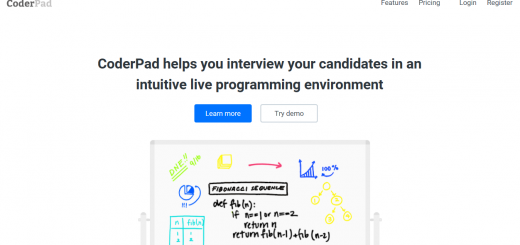 观点
观点
只有三名全职员工,每年收入却超200万美元,利用实时编程环境进行面试?这门生意还能这么做...
编者注:本文采访对象为Vincent Woo,程序员在线考试测评CoderPad创始人。
采访者:你好,请你介绍一下自己的背景,以及现在的工作。
Vincent Woo:大家好,我叫Vincent Woo,CoderPad创始人,这一平台支持通过网页浏览器和程序员进行面试。我今年28岁,住在旧金山湾区。大学时候,我念的是计算机科学,在创办CoderPad之前,我也只是先后在几家公司当普普通通的程序员。
不过,辗转几家公司并不意味着我喜欢。我其实从未享受过学校教育,成为企业员工要比做学生好得多,但也没好太多。
我在谷歌和亚马逊过了平淡无奇的几年,总的来说,我一直感觉成年人可以说小气、短见又懒惰。这样的情绪堆积起来,逐渐转变成了对公司的怨愤。
我直接拒绝阅读我的任何绩效评估,这很好,因为我知道他们想说什么。我不是一个好员工,我知道。
我之所以告诉你这一点,是因为我相信,我作为员工的态度影响了我创办公司的方法。 CoderPad是一家小企业,通过为大公司提供有价值的服务来赚钱,就是我曾经讨厌的那些公司。 是的,我自己身上也充满着讽刺意味。
CoderPad的产品是面向程序员的高保真采访环境,强化了代码执行、调试和堆栈追踪。我们把这个工具卖给程序员很多的公司。如今我们有三名全职员工(除我之外),每年的经常性收入超过200万美元。
采访者:是什么促使你创办了CoderPad?
Vincent Woo:CoderPad最初是我在Everlane工作时的一个副项目(这是我第一个也是唯一享受的工作)。当时我正在面试一大堆候选人,我想看看候选人会如何解决问题。
其中一个人问我某特定Ruby对象是否支持.map运行,我想说:“你试试不就知道了!” 但问题是,我们当时用的是像Collabedit这样的一些老旧的共享文本编辑器,它不支持这样的高级功能。
我觉得这很荒谬,所以我想购买一个支持这种功能的产品:提供一个实时的执行环境,以及同步文本编辑器。 令我惊讶的是,我找不到这样的产品。 我觉得开发起来应该不是太难,所以我在周末攻克了一个仅支持Ruby的模型。
当我开始使用它来面试Everlane的候选人时,我很明显地感觉到可以把它卖给其他人——这款工具无疑给充满压力的过程“减负”了。与此同时,我也偶尔在其他公司面试,因此我重建了原型,并开始了解我的采访者是否也喜欢它。 他们通常是喜欢的,这大概就说明这个想法是正确的。
采访者:这款产品最初开发时发生了什么?
Vincent Woo:最初我利用晚上和周末的时间开发CoderPad,因为白天我还要上班。我第一次给客户的版本花了大约三个月时间来开发。这个部分在我的记忆中是模糊的,因为那是很久以前的事情,而且当时我只觉得自己是弄着玩玩。我对这款产品能够成功这个概念漠不关心,所以这个开发阶段似乎只是另一个副项目。
我隐约感觉知道这个产品会成功,但是从情感上来说,似乎又不太真实。然而,当我每个月当经常性收入突破4000美元时,我开始感觉到“真实”了,这时候,我放弃了我的全职工作,开始专心开发CoderPad。
在Node中构建CoderPad网站的第一个原型时,我做了一个非常糟糕的决定。我通常不会做出糟糕的开发决定,但这绝对是最无法想象的。当我发现Node的网页开发速度有多慢之后,我很快就重写了Rails中的错误。幸运的是,现在做微代码执行的API服务器,我们和Node的关系更有成效了。
不过,这就是试图用最少的资源创办软件公司的根本问题。 你想尽可能加快开发速度,但你总是对你使用的程序库或框架感到不安……就是这样。
例如,我使用Devise程序库进行用户认证,因为它当时似乎是事实上的行业标准。然而,我发现它实际上是糟糕的。如果一开始我们选择一个更好的程序库,那么速度会快很多,但是我们已经选择了,如果现在更换,更快使开发过程滞后。这就是人生。
一开始,我们将代码评估外包给第三方服务机构,但这有点令人不太舒服。他们只提供了基本的代码评估,并不能提供实时REPL交互,而我希望CoderPad具备这一点。
我们还必须学习如何运行几十种不同的编程语言,并且至少以说得过去的方式解决其中的问题。
采访者:你是怎样吸引用户,发展CoderPad的?
Vincent Woo:我们最初的用户来自我个人的推销,推销给我认识的人。我们在HN和Product Hunt上做了一些曝光,但帮助不大。一段时间后,我们网站的流量开始自然增长。
我们或许从所谓的病毒式传播中受益颇多。 我听过有些候选人向其他公司介绍CoderPad的故事,因为他们喜欢在我们的平台上面上,而不是谷歌文档。
我们也很早就把重点放在了销售上,所以我们很多的潜在客户最后都转化成了付费客户。我的一个高中朋友Darius开始的时候帮助我销售产品,令我意想不到的是,有一天他放弃了自己的高薪工作,全职加入CoderPad。
了解销售是一个狂野的旅程,乐趣也相当多。从很多方面讲,销售是对人类的现代图灵测试。你必须和客户清楚地沟通,使自己具有人性化,专注于客户的需求,并最终拿下订单。你所能利用的工具不多——通常是电子邮件和电话。你说你关心客户是一回事,真正关注他们在电话中所说的一切,这又是另一回事。
我们把所打的销售电话都记录了下来,并找出客户感到困惑或忘记提出重要问题的时候,这一做法非常有效。我们发现有这样一个问题:客户通常不会坦率地说“我不明白”。如果我们给对方的回答不清楚,他们通常会说:“好的”,继而寄希望于之后的谈话中,答案会变得明显。因此,你必须积极思考说什么是正确的,而且因为客户不同,说什么可能也会有很大的差异。不同客户对你的价值主张的感兴趣的方面也是不同的。
但是更广泛地说,我真的不知道我们是如何吸引用户的。与许多其他受采访的公司相比,CoderPad可能是不寻常的。我们不收集用户指标,也不做任何营销。
采访者:你的商业模式是什么?你是怎样扩大营收的?
Vincent Woo:我们根据客户的使用情况向客户收取订阅费,而且一般只进行进线销售。据我所知,我们通过销售策略和提高价格而增加了收入。“多收费”这句老话放到今天仍然有道理。
我想在这里离题谈谈选择好客户。围绕这一话题的讨论不多,但好客户和坏客户之间是有很大差别的。我并不只是根据合同规模,虽然客户与合同规模之间是相关的;我想谈的是,大客户往往更好。
我的意思很简单:他们是负责任的吗? 一些客户已经全面了解了他们的选择,知晓各种信息,最后才认为你的产品可以依靠。这些客户通常渴望学习更多,顺应变化,因为他们真正在努力完成某件事情。
其他客户试图通过经销商购买你的产品。这些人会安排很多会议,花很长时间来决定什么所有有价值的事情。
能够在销售初期基于质量确定潜在客户将有助于保持理智,避免浪费时间。作为公司的唯一所有者,我可以选择放弃自己不喜欢的客户,我几乎像珍惜生命般珍惜这个特权。
好的顾客会和你一起成长,向他们的朋友介绍你,这样一般很棒。我宁愿有只有几位好的客户,也不愿有一堆平庸的客户。
采访者:你经历过的最大的挑战和障碍是什么?
Vincent Woo:我们之前(现在仍然如此)很难确定我们的定价模式。 最早的CoderPad版本提供了两个自助服务计划,分别是每月20美元和50美元;如果用户超过最大计划,也可以联系我们给出优惠的企业定价。我们分别把这些价格提高到了50美元和100美元,但仍然存在问题。
大公司一开始会使用100美元/月的计划,在达到他们的上限时,就想升级到企业计划。为了使我们的业务更合理,我们必须能够以每月数千美元的价格向大客户收费。然而,从之前的价格猛跳到十倍以上造成了不小的震荡。客户看着我们的自助服务价格时,在观念上仍然停留在100美元,我们不得不花很大的精力让他们跨越这个鸿沟。
Darius和我为此产生了不同意见。他主张提高自助服务计划价格,使企业价格看起来不那么吓人。但我认为,如果价值主张足够,定价不应该是多大的事。同时,我也想为小公司维持一个相对实惠的计划。
最后,我们增加了第三个自助服务级别,提高了第二个的价格,至此每个月的价格分别为50美元,250美元和750美元。这一定价既让我们从自助服务计划中获得了更多收入,也使与大公司的谈判变得更加容易,因为想要企业计划的公司都已经习惯了每月支付750美元。
这里真正需要记住的教训是:我自己不愿意解决这个问题。我害怕惹恼客户,也不愿意以更低的价格服务大客户。事实证明,这并不是什么大不了的事情,但是我的拖延症打败了我。
我想,许多创始人都会拖延他们最重要的事情,把第二重要的事情拿来当作拖延的借口。以我个人经历来说,我当时做着许多不起眼的事情,却迟迟不愿修改定价模式。我希望读者们不要重蹈我的覆辙。
【猎云网(微信号:ilieyun)】12月6日报道 (编译:可芮ccino)
-
 观点
观点
钉钉、企业微信的阴影下,中小SaaS玩家们的未来在哪儿
文∣二楞 螃蟹
编辑∣强强
来源:虎嗅网
11月19日,阿里巴巴钉钉在深圳召开了战略发布会,CEO无招介绍了新推出的多款智能硬件产品。
关于定价,无招说了句“保持初心”。无论软件硬件,统统免费。
2014年2月,美国企业级沟通工具Slack横空出世,当天就有8000多家公司抢着注册。在媒体的疯狂报道下,引发了国内SaaS企业竞相开发通讯模块的热潮。
同年12月,钉钉也发布了它的第一个测试版本。
“钉钉出来后我们就发现,以后Teambition要解释最多的问题,就是我们和钉钉到底区别是什么。”Teambition CEO齐俊元告诉锌财经潘越飞。
为了应对巨头带来了威胁,比钉钉早整整一年半上线的Teambition选择了断臂求生。而免费巨头的存在,也成了大部分OA和IM企业、乃至SaaS行业的共同心病。
“除了少数垂直行业的SaaS以外,通用领域已经一片肃杀。即便是CRM、HR、ERP等分支,也难以避免和免费产品的竞争。”明道CEO任向晖表示。
面对巨头的挤压和别无选择的用户,中小SaaS玩家们必须要走出一条新的路径。
01. 被免费惯坏的市场
Slack大火、钉钉入局,众多竞品跟风增加聊天模块,而齐俊元却选择将发展势头正好的团队协作即时通讯工具“简聊”直接开源,放弃在企业即时通讯领域已经取得的优势,就打团队协作牌。
“其实当时我们内部也有不同的观点,但是经过讨论后我们判断,IM加上OA可能会是大部分企业标配的一个东西,而这个东西不会有任何商业化的机会。”齐俊元解释,因此“专注协作”就成为了 Teambition最核心的战略。
“Teambition是关于事的,你在Teambition跟进工作事务,而不是找到某个同事。这就是协作工具和沟通工具的区别。而事实上,Slack上集成度最高、用户使用最多的工具正是类似Teambition的 Asana、Jira、Trello这样的协作工具”。
Teambition在企业微信、钉钉大火的2017年获得了比往年更高的增长速度,或许正是这一战略的成果。
以此来看,在免费的巨头面前,差异化或许是最保险的路线。
一位和钉钉狭路相逢的资深从业者欲哭无泪,他说:“我们的确比他们做的要细、要好,但是你拼不过人家不要钱呀。”
相较付费市场,免费策略似乎更像是一种逃避。“通过免费,可以规避一些难以承担的责任和风险,比如通话质量、接通率等等。我都是免费的,你还要求什么?”一位业内人士表示。
虽然大家都是摸着石头过河,但对于钉钉、企业微信这样的人民币玩家来说,砸钱铺路,短时间的输赢无所谓。而这对于中小公司,显然不是个好消息。
一位业内人士透露,目前国内大量SaaS公司都处在活得不那么滋润,但也死不了的状态。当免费成为市场主流,SaaS似乎变成了一门“熬死对手”的苦逼生意。
那些已经进入付费市场的SaaS企业,又活得怎么样呢?
企企通CEO徐辉告诉锌财经潘越飞:“你看国内新三板上市公司的财报就会发现,大部分公司的年费客户平均客单价就几千块钱。而欧美成熟的SaaS企业,客单价几十万、几百万美金的比比皆是。”
大量低成本替代方案的存在,进一步拉高了企业的付费门槛,SaaS公司的日子确实不如前几年那么好过。
“有免费的谁用收费的,老板又不管员工用得爽不爽。”一位项目经理直言。
一名投资人补充,国内SaaS市场不愿付钱的小企业太多,门槛高的大企业也不少,中间有需求、能付费、门槛一般的中型企业太少。而要拿下这块市场,SaaS公司必须拿出足够有说服力的产品。
02. 最终比拼的还是产品和服务
“因为涉及14家线上店铺,运营、设计、客服等多个环节,我们的第一个双十一过得非常混乱。”依视路电商部门的Todd表示。
作为眼视光行业的老牌外企,依视路在中国的电商部门用谷歌等工具并不能完全适应公司业务。双十一的混乱过后,依视路开始尝试使用协作类SaaS产品Teambition来对工作进行管理。“Teambition让大家的工作更清晰有条理,在双十一这样的大挑战面前,我们也能有更多精力做得更好。”相关负责人说。
尽管SaaS被普遍认为是比软件更理想的企业工具,但在美国的头部SaaS企业年收入都以数十亿美金计,市值已经飙到数百亿美金的同时,反观国内,“吃不饱饿不死”是大多数企业的真实写照。
明道CEO任向晖告诉锌财经潘越飞,SaaS公司卖的东西不贵,但是给客户创造的价值呢,他觉得也不明显。最典型的一种反馈是,企业做项目任务管理,工具可以帮助提高执行力,这是一个很笼统的话,客户也明白,也不反对,但是客户依然不知道接下来该怎么做。
齐俊元也认同,产品本身的问题是现阶段行业的主要问题。他说:“很多SaaS公司做的东西很薄,并不能真的解决问题。他说在解决一个问题,更多的时候只是在命题和方向上匹配了,产品实力也好,服务实力也好,都还没做到。”
从卖软件到卖服务,SaaS产品能不能代替软件更好地满足企业需求,能不能为客户创造看得见的效益,是说服企业掏钱买单的终极指标。
很多人困惑的是,这么多的资金和人才流入,SaaS行业为什么还没出现像2C市场那样迅速崛起的明星企业?或是说,这个行业的发展速度似乎比预期的要慢很多呢?
齐俊元解释说:“SaaS不像消费品市场,你只要找到一个刚需,人人都是你的消费者。企业是你找到一个刚需,但并不是每个企业都是这个刚需,它是非常精细的工作。这就是为什么我们这件事情迭代是最多的,因为这件事情是最难的。”
SaaS企业做一代产品的周期是2年~3年,不仅要满足新增用户的需求,还要兼顾老用户的使用习惯,对产品逻辑和设计的要求非常高,需要持续的打磨迭代。
在Teambition近200人的团队中,销售有50余人,而研发团队有近100人,几乎占总人数的一半。“美国的SaaS公司做到IPO,或者在行业上立足,可能要15年左右的时间。在国内即便能加速,8年、10年也还是需要的。”齐俊元显然已经做好打持久战的准备。
正视了这一点,任向晖显得格外从容,他说:“SaaS这么新生的行业,5年~6年的时间大家在探索,(目前的进展)我觉得很正常,没什么不正常。”
光砸钱砸不出好产品,SaaS有它自己的发展规律。而产品和服务,则是付费SaaS玩家留在牌桌的必备筹码。
03. 挖深护城河,然后等风来
随着SaaS行业的不断发展,赛道也越来越细分,但可挖掘的市场空间依然很大。
专注团队协作的Teambition正在产品和服务的纵深上持续发力,齐俊元透露说:“除了大家能想到的产品发展策略,我们已经开始做的事情是,利用前沿研究去看数据、员工行为和管理者行为之间的互动关系,看能不能抽象为对企业本身管理的一个洞察,然后给管理者赋能。”
最近一个有趣的发现是,任务逾期率和员工绩效不一定是负相关的。逾期完成任务越多的人,反而绩效越高。
Teambition以项目为核心的产品逻辑
“这家公司的问题在于能干的人有限,所有人都找这些能干的人,所以他们任务逾期率高。”齐俊元说。管理赋能就可以通过给这些人增加助手、调整他们和其它部门的合作机制等方式来提高公司的运行效率。
“我认为3年~5年之后,管理赋能这件事将本质地决定了大家评价企业软件的标准。仅仅跟我谈效率提升、仅仅跟我谈管理效率,这样的软件就不再有价值了。”齐俊元的语气非常肯定。
SaaS软件的另一种可能,可以参考专注于供应商管理的软件企企通。企企通从供应商管理切入市场,从大企业用户着手,利用核心大企业的关系网把上下游的供应商拉到平台上,形成网络效应,为平台获取大量流量。
企企通CEO徐辉告诉锌财经潘越飞,对于走平台路线的企企通而言,SaaS只是入场券,后面一系列的增值服务才是重头戏。
“在中国这样的环境下,出一个Salesforce这样的公司概率大吗?”徐辉爽朗一笑,“我可以这么说,中国一定会有Salesforce,但中国的Salesforce和美国的Salesforce一定不一样。”
浏览企企通的相关新闻可以发现,今年以来,企企通与高信隆、中子星、京东金融、民生银行、平安银行等机构达成了合作,通过为平台用户提供金融服务的方式收取增值服务费。平台的收费显然是远超SaaS产品本身的,而供应链金融仅仅是企企通的一小步尝试。
锌财经观察到,供应链金融已经成为很多SaaS产品的逃生之路。“不少公司卖不动产品了,就开始吹嘘自己要做供应链金融,找下一轮融资。”有资深人士分析称。
“这个观点不一定对,你看Salesforce或者Slack都没有做供应链金融,依然是持续增长的美股上市公司。”齐俊元认为,提高效率才是现阶段的关键。至于供应链金融,就国内的SaaS公司而言,还言之尚早。
想靠一款SaaS产品改造供应链,甚至改变整个行业,目前确实难以让人信服。
那么如何才能在这场巨头挤压的混战中活下来呢?
“场景和产品,做好护城河,自然能够很好地增长。”齐俊元说。
-
 观点
观点
经纬张颖给创业者的七条融资建议
编者按:本文来自微信号经纬创投(ID:matrixpartnerschina),作者:张颖。
对于融资来说,12月交割的案子其实并不少。一般一家公司在Q3启动融资,往往会拖到Q4甚至1月份最终落定,所以年底也可以称为交割季。
但另一个意义上,年底是融资淡季。因为机构们在12月25日前后再看新案子的几率并不高。
淡季通常宜反思忌贸然行动。这也是我们把昨天经纬张颖发到经纬系CEO群的七条融资建议,再发到公号上来的原因所在。这些建议包括了市场形式分析、业务做重、先合并再融资、拿不拿战投以及什么币种的思考等等。
好的公司在任何时候都是旺季,但也需要谨记今天的优势也容易被明天的趋势所代替。以下是我们的采访原文,根据张颖口述整理。愿看完的人都能获得资本意志的加持,Enjoy:
一直以来,我都经常对同事说要对业务数据极其敏感。今天经纬投资的公司已经超过430家,到年底这个数字可能会超过450。这样复杂多样的体系、商业逻辑和其中的利弊轻重,显然已经不能只靠团队主观和感性思考去做判断了。数据基础上的复盘和寻找新的趋势非常重要,最近我和投后数据、法务和资本小组,又做了一些系统性的梳理。
在经纬系的430家公司里,今年10月底已经有超过130家经纬系公司融到了新的一轮——融资次数我看了一下接近200起,这里面也有一些滚动融资。刨除多个巨额融资的项目比如滴滴、ofo和瓜子二手车等,2017年经纬每投资1美元的等值货币,可以撬动14倍的后期市场资金跟投(如果算上巨额融资,这个数字是62倍)。
我一般会阶段性地参与被投公司的部分融资进程,也与投资团队有过非常激烈的讨论。不是所有的公司在融资过程中都非常顺利。这里面有些一开始就占据主动优势,有些则被一些投资机构牵着走。以下这七个建议是最近我分析思考后的总结,希望对在融资过程中的公司有一些短中期的帮助:
1)所有轻公司以后都会做重,也必须做重,只有做重才能有效抗拒巨头杀入,也唯有如此才能做大。一家公司从初始业务到扩张,今天市场给你适应的时间,要求你去扩张的时间窗口越来越短——我们做了一个统计,各种公司都加快了业务范围扩张的速度,这里面需要的沉淀时间从以前的两年缩短到了今天的六个月:有量的行业交易平台不再拘泥于撮合和流量的流转,他们非常清楚自己要想做大就一定要打造闭环,参与到更多的交易环节里,唯有如此才会实现更多的利润,今天瓜子二手车、找钢网等等都是如此;已经获得流量和用户,在过去偏轻运营的医疗公司,现在也在积极尝试跟线下实体的衔接。流量今天越来越贵,从增量市场转向存量市场,就需要延展用户生命周期,更充分地挖掘单个用户价值,参与到行业的整个环节打造闭环。投资人现在也都很认这点,既然这样,那就现在开始,从今天开始。
但你也要明白,一旦启动,这就意味着是在做一家完全不一样的公司。以前最好的技术人才,可以通过单点突破、快速试错杀出一席之地。今天不只是巨头虎视眈眈,各个细分领域比如衣食住行随着你的渗透与垂直做重,对你的上下游管理能力、新的人才招揽与储备、平衡旧有业务线、迅速试错以及调整等等的要求只会越来越苛刻也越来越多。今天,在各个行业杀出重围成为明星公司的挑战越来越大,不止是ToC的公司会面临这样的挑战,其他行业也同样如此。
2)这个市场现在看是不缺资金的,2017年创投基金的规模较前两年增长了62%,新基金的规模是十年前的50倍,数量增长了18倍,但是越来越明显的一个趋势是:源源不断的资金都聚拢在头部公司。这并不仅仅是大行业里公司发展到后期才会遇到的情况,从A轮、B轮、C轮再到D轮——只要资本认可的特定细分领域,行业的前两名可以拿到不成比例的巨额融资;反之,如果你是处在前两名之外,无论运营再好,在行业头部选手迅速完成一轮又一轮巨额融资的时候,你想要融他们1/20的资金也会异常艰难。
如果你不是行业前二,短期内也做不到这个行业地位,如何求变?这真的是非常需要深思熟虑的一件事。三个月之内自己一定要想清楚、也要动起来。今天创业的环境仍然是黄金时代,但竞争确实也越来越残酷。同时你也还要意识到,竞争并不只来自目前现有的直接竞争对手,也可能是其他角落杀出的、完全意想不到的对手。如果这些对手获取资金的能力很强,那是非常可怕的。
3)这就要求创始人要开创性地思考。为了规模为了融资的便捷,越来越多各阶段的公司开始有主动合并的趋势。现在我们看到更多的D轮、C轮、B轮甚至A轮,都有这样的案例。创始人一定要认真思考下是不是有先合并再融资的可能。有可能合并后,能够吸引更多的资金,创造一定时间内的绝对优势。
我们自己内部的一个数据是,在过去的两个月中,经纬系总共发生了67起并购意向,而在过去的四年里,我们总共只发生了31起已完成的并购,比如2017年“饿了么”和“百度外卖”的合并;也包括今年,更早期领域里发生的“上上签”收购“快签”、找塑料网收购鹏云等等案例。我们也在积极配合创始人们去做各个方面的思考、讨论和行动——他们当中有些是收购别人,有些是两家的合并,还有些是被收购。
如果你已经想好了,正处在合并的前夕或者过程中,你需要再思考一下你选择合并的标的物和真正的目的;你也需要记住中国是没有联席CEO制度的,6-8个月会有一方不得已离开;善待合并业务线员工;处理好各自背后利益和诉求各异的投资人,有些时候他们是助力,但也有些时候他们是阻力。
4)不要再低效地去获取用户数。在现在这个流量越来越难越来越贵的阶段,投资人不认这点了。一直以来,线上流量的获取都比较简单粗暴,投放渠道和ROI这笔账也已经算得比较清楚了。但今天这个立体化竞争的阶段,做好产品和服务的基础上,获取流量的方式是非常多的,线上线下、内容营销、创始人IP化运营等等——要找到你擅长的,并且创新、全方位地去思考。比如有一家非经纬系金融公司,通过投资多家小型桌面广告公司,挤压竞争对手投放渠道,成为他们唯一的投放客户,通过这些广告资源去推荐自己的金融产品,效果不错。
尼克松当年也曾买下各大地方小报的版面以挤压肯尼迪的广告时间,这个事的核心不在选择的渠道,而在他们从另一个维度思考了传播竞争与营销效率创新的问题。各行各业也有很多这样的例子,找到适合你商业模式的高效推广,创新思考与执行现在变得越来越重要。另外,记住公司发展战略的核心不是获得利润,而是获得竞争优势。
5) 如果公司处在平缓期,且没有找到有效的突破方式,账上的资金预期只有12个月,你的推广等成本又无法减缓或暂停,那这个时候你一定要给自己留比原来预设的更为充足的融资时间。
当然,市场上的钱现在越来越更多元化了,有VC、有各种人民币、有超级个人天使、有战投、也有政府引导资金。过往给力的成绩,加上经纬的早期引导效益现在越来越直接,我还是相信未来也是海阔天空。
现在每一个创业公司要去融资,一线知名美元投资机构只是多个选择中的一个,事实上拿到钱重过对机构背书和币种的纠结。此外,我多说一点,拿人民币或美金的思考,要不纠结、有弹性、也要有预判——对业务、利润和公司发展所需要的资金有超前的思考,对币种选择要认可市场规则也要有弹性。融 100 万到 300 万美金的公司,可以考虑人民币;如果是大额融资,理所当然背后的思考要更加严谨:如果公司收入利润都非常好,但行业天花板比较明显,人民币会是比较好的选择;如果处于一个激烈竞争的大行业,业务发展非常迅猛又需要大量资金,但还没有成正比的利润增长去验证匹配快速增长的高估值,那么融美金可能就是你唯一的选择,今天人民币基金还支持不了五千万到上亿人民币那么从容的投资,这会缩窄灵活性、也会增加后续融资的难度;当然,如果中长期看业务方面有政策顾虑,比较长的一个未来里也只能看到三千万到一个亿的利润,同时你看好A股市场并接受市场对业务和利润的要求,就咬着牙拿人民币。
在这个基础之上,如果你决定选择人民币,就要按A股市场的规则去行事,对于业务和利润要有超前的思考与追求,今天A股市场的规则就是如此,对收入和利润有明确的要求;但反之,业务健康发展的基础之上,不要让币种成为你的桎梏,很多创始人融了一个币种之后往往会陷入惯性思维,在资金来源的灵活度上陷入被动。
6)BAT战投现在是非常流行的一件事,这也会让之后的融资更容易一点,这会让其他财务投资人有信心选择与你站在一起。但你也要想清楚站队的时间点,以及会不会因为站队损失业务资源。
如果你想不清楚或者拿捏不好细节,可以问问经纬的核心投资同事,迅速展开讨论。三年以来,经纬系有87家公司拿过战投的钱。在这些案例上,我们有非常多的历史数据,有各种各样的经验,也遭遇过各种各样截然不同的后续:这中间有拿完资金一骑绝尘的,但坦白说也有因为创始人对融资条件的不严谨陷入被动的案例——也是基于这些,我们能很负责任、毫无保留地去分析积极和消极因素,帮助创始人把握底线并且更好地做出决策。
7) 商业变现手段越来越丰富,商业变现证明也越来越重要,今天的投资人要很早就看到商业逻辑/靠谱的大生意的苗头,才会热衷下注。大家一定要重视这点,不能像前几年那样只埋头做产品涨用户。当然,每家公司变现有不同的节奏,但对应的思考和尝试早一点总好过晚一点。变现有点像开水龙头,也许水源要从很远的地方流过来,团队也需要时间准备,一定要不断地去思考。
跨界现在是一个不容小觑的趋势,信息流动的速度越来越快,节奏也会越来越快,所以更多思考和尝试也需要更加创新——一定要注意商业化变现的多样性和可能性。今天经纬系已经形成了集群效应,经纬有庞大的投后团队去配合投资团队;我们在很早的阶段就会去寻找激发经纬系中同行业和跨行业公司之间合作的可能性,帮助去发起更多的讨论和合作。经纬的帮忙不止是融资,也包括商业化的跨界、经验和实质建议的碰撞。这些是非常重要的,也能为公司未来的良性发展和强势融资做好铺垫。
后期投资人对于投资对象是否能做到足够大,成为最终的胜利者极其在意,所以更多的资金涌向头两名是非常自然的选择。市场需要资金和时间去消化这些项目,如何高效融资以保持现金不断,同时拓宽市场占有率以厮杀进行业前二的位置——这两点让今天更多的创业公司开始用新的方式思考问题,也是在某些领域比如无人零售、新货运等方面在非常早期就已经寻求合并的路径的原因。
在商业领域里,竞争永远无处不在,并且极其直接。新经济领域的早期竞争从来没有确定的规则,亦没有规模经济来阻止新玩家的加入。但随着某个特定领域的逐渐成熟,要建立竞争优势需要更多的变化,如果你想要胜出就必须要找到捍卫自己地位的方式——你的市场面临更激烈的争夺,用户的选择变得更为多样,流量越来越贵,你需要向存量市场要更多的用户价值。
资本市场是变化无常的,很多时候也是没有情面与冷酷的,但这并不代表它不能被高效利用。有时候在融资上,你需要的不是大量的行动,而是更精准的拿捏。当然我始终相信,创始人们的凶悍执行与耕耘,最终会胜过资本的嚣张与速度。但是今天你还是要承认,善于利用资本意志的公司很多时候会获得更多的便利;有业务执行能力的创始人因为不擅长融资或是对资本的利用不够高效,被对手压制或超越的例子也是屡见不鲜。从长期看,市场是称重器;但在短期,资金就是投票器。这点你们也要认。
没有什么事情是注定容易与一帆风顺的,走出沼泽的唯一方式在于不断前行。最后,愿资本意志都可以站在你们这边。
 扫一扫 加微信
hrtechchina
扫一扫 加微信
hrtechchina
 观点
观点
 观点
观点
 观点
观点
 观点
观点
 观点
观点
 观点
观点
 观点
观点
 观点
观点
 观点
观点
 观点
观点
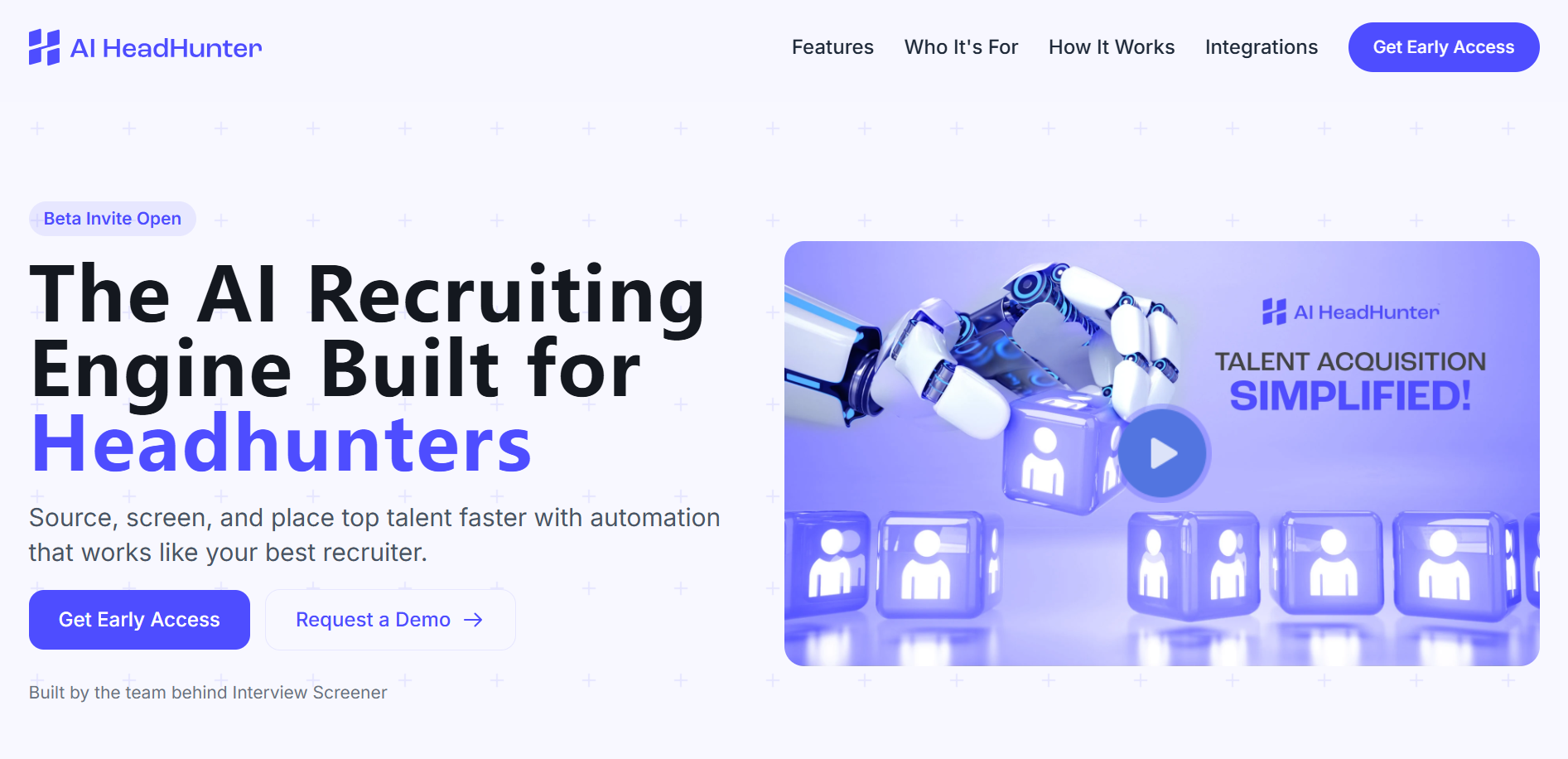
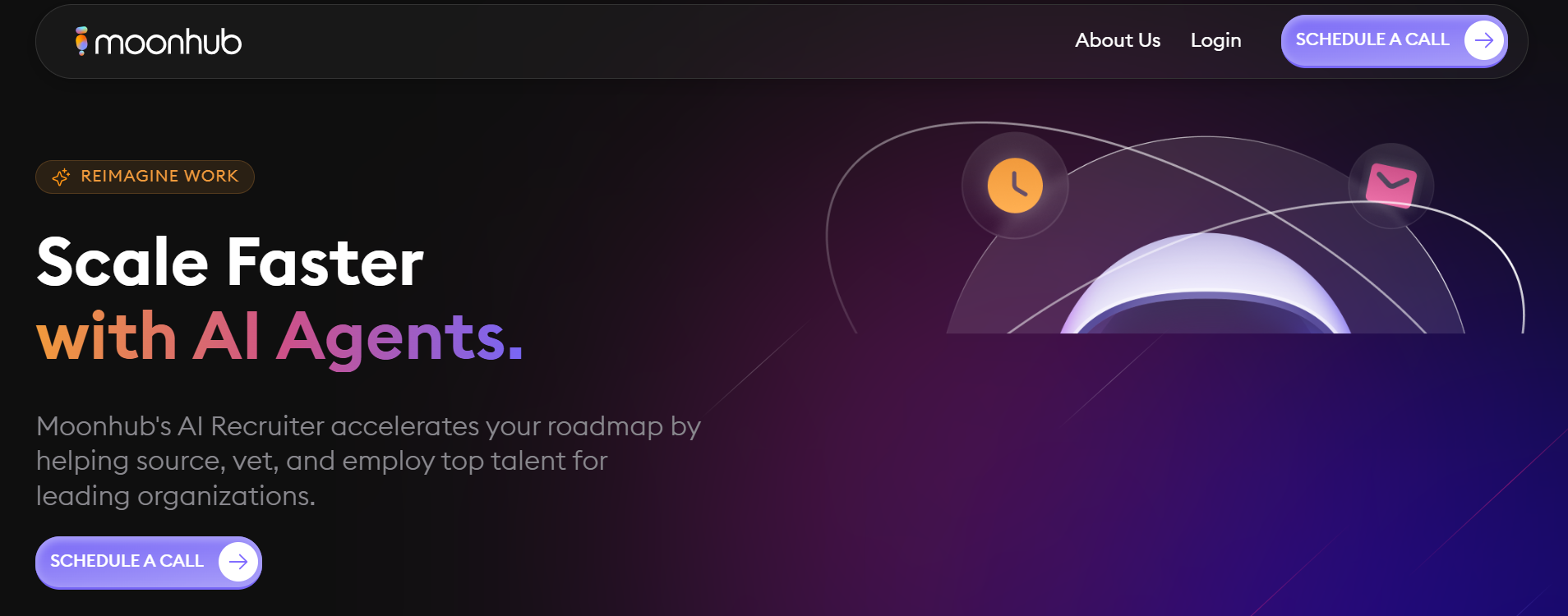



 扫一扫 加微信
hrtechchina
扫一扫 加微信
hrtechchina

